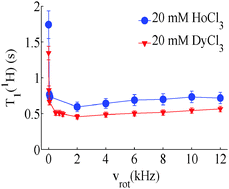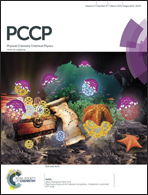Rotation-induced recovery and bleaching in magnetic resonance
Abstract
Thurber and Tycko recently described a ‘bleaching effect’ that occurs in magnetic resonance when solid samples that are doped with paramagnetic agents are subjected to rotation by magic angle spinning (MAS) in a static magnetic field with a rotation period comparable to the longitudinal relaxation time T1e of the electron spins. The bleaching effect has been investigated by Thurber and Tycko in samples spinning at temperatures near 20 K in a field of 9.4 T and by Corzilius et al. near 80 K in a field of 4.9 T. In our experience, the bleaching effect is not very severe at temperatures near 100 K in a field of 9.4 T at spinning frequencies up to 12 kHz. Bleaching can partly cancel DNP enhancements that are normally evaluated by comparing signal intensities with and without microwave irradiation. The signal attenuation due to doping and sample rotation is usually not taken into consideration when defining enhancement factors. In this paper, we describe a novel observation that the rotation of glassy samples doped with lanthanides spinning at frequencies as low as 0.1 kHz can lead to a significant reduction of the spin–lattice relaxation times T1(1H) of protons. This effect, which bears similarities with the so-called spin refrigerators, may contribute to the success of ‘brute force polarization’ at sample temperatures in the mK range. The acceleration of longitudinal proton relaxation also allows one to improve the signal-to-noise ratio per unit time.


 Please wait while we load your content...
Please wait while we load your content...